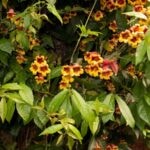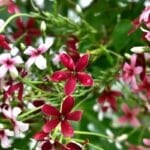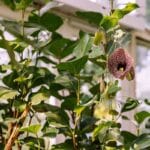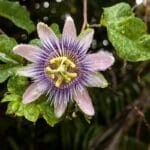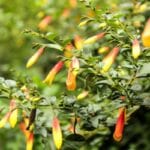Nothing beats having beautiful flowering vines in the landscape. The American wisteria is a beautiful addition to any landscape. With its attention-grabbing flowers, users of the landscape will take a second look.
Moreover, this wisteria vine grows aggressively, so it will cover a large surface in a short time. Continue reading to know more about the American Wisteria vine.
Botanical Information
American wisteria is also commonly called Kentucky wisteria and Texas wisteria. In the scientific community, it is known as Wisteria frutescens and is synonymous with Wisteria macrostachya, Kraunhia macrostachya, and Kraunhia frutescens.
The vine belongs under the Fabaceae family, which is referred to as the pea family. The family consists of 20,000 species of trees, shrubs, herbs, and vines.
The genus, Wisteria, was coined in honor of an anatomy professor from the University of Pennsylvania, Caspar Wistar. On the other hand, the species, frutescens, translates to woody.
Spatial Distribution
Most species under the Fabaceae family come from temperate regions. The American wisteria vine originated from the Eastern parts of the US. Also, it is found naturally in coastal parts of Illinois, Virginia, Texas, and Florida. The plant thrives in USDA zones 5 through 9.
Growth Habits
The American wisteria is a deciduous vine that grows aggressively and requires moderate maintenance. It twines and climbs various structures and trees, as it extends 15 feet to 40 feet vertically and 4 to 8 feet horizontally.
Its flowers show from April to May. Also, it caters to different wildlife, mainly the Zarucco Duskywing and Long-Tailed Skipper butterflies. These butterflies enjoy the nectar of the vine’s blooms.
Leaves
The leaf type of the American wisteria vine is pinnate, bipinnate, or palmate. Each leaf is composed of 9 to 15 leaflets with a leaf on the terminal end of the stems.
They are arranged oppositely on the stem. Also, each leaflet is green, shiny, hairless, and lance-shaped. Moreover, this vine is deciduous.
Flowers
As the main attraction, the flowers of the American wisteria are showy in spring. Flowers vary in color from white, purple, blue, red, yellow, and green.
They are racemes extending from 3 to 6 inches. Also, they grow in a drooping manner which makes them a great vertical plant. Moreover, its flowers are fragrant, which adds to the appeal of the plant in a garden.
Fruit and Seeds
After flowering, the plant produces seed pods that elongate up to 5 inches long. Pods are shiny, flat, and narrow. When fall comes, the pod splits open and shows the seeds inside.
Grow and Care Tips
Sun Requirement
The Wisteria Frutescens is a sun-loving vine. It prefers a full exposure to sunlight with 6 or more continuous hours. Exposure to full sun is beneficial to the vine, especially during its flowering stages. However, it also thrives in partial shade with around 2 to 6 hours of sunlight.
Water Requirement
Supplying average amounts of water frequently will help optimize the growth of the Kentucky wisteria. It also prefers extra moisture occasionally. Remember to observe the plant to know if it needs more or less water.
The frequency and amount of moisture will also vary depending on the environmental conditions. During warmer days, more frequent watering is advised and vice versa.
Temperature and Humidity
A warm and moist environment is highly beneficial for the vine’s growth.
Soil Requirement
The Wisteria Frutescens is biased to moist, well-drained soil and rich in organic matter. In terms of soil pH, the vine thrives in acidic to neutral soil.
The yellowing will occur when the soil becomes alkaline. Moreover, the soil type for the vine varies from loamy, sandy, sandy loam, clay loam, and clay.
Fertilizer Requirement
Application of fertilizer is not required and should be done carefully. The soil pH is easily altered with the application of fertilizers. Remember that alkaline soil will not do good with the vine.
However, if fertilizer application is to be done for the upkeep of the garden’s soil, make sure it is vital to read the recommended rate on the product label. Also, avoid using nitrogen fertilizers during the flowering phase as it will promote more leaf growth than flowers.
Maintenance Activities
As an aggressively growing vine, pruning is the major maintenance activity. Removing the dead and damaged plant parts will replenish the plant’s aesthetics and reduce the possibility of getting a disease.
Moreover, it helps the vine keep its form and shape. Pruning makes sure that it is kept within boundaries.
In landscapes where this vine is grown as a screen or specimen, they were trained to cling to fences, trellises, pergolas, and other supporting structures. This is why providing sturdy support for anchorage will prevent accidental damages to the vine and landscape users.
Propagation
Seeds and stem cuttings are the common planting materials for the Wisteria Frutescens. However, using seeds will take years before the plant becomes established. To lessen the waiting time, stem cuttings are used.
Choosing an actively growing stem with leaves plays a vital role in the success rate of propagating a new wisteria. Moreover, the application of rooting hormones on the exposed part, where the cut is, before sticking it into the ground will help hasten the root development.
Sow the stem cuttings in a porous, moist, and well-drained growing medium. Also, supply water through misting to ensure equal amounts of moisture are supplied for the cuttings. Once they have rooted, transplanting should be performed, keeping in mind the requirements mentioned above.
Wisteria Frutescens Common Varieties
‘Amethyst Falls’
This variety is famous for its lavender-purple flowers with a light scent. Flowers grow on younger stems and are showy in spring until summer.
‘Nivea’
The nivea has distinctly white flowers with racemes extending from 6 to 12 inches. In each raceme, the florets bloom simultaneously, which gives a more dramatic display.
‘Alba’
This variety has showy large pure white flowers with shorter racemes but denser groups.
Function In The Landscape
The Wisteria Frutescens is a beautiful vine for pollinator gardens and butterfly gardens. However, it may be incorporated in different themes to serve as a specimen, foundation, and screen plant. Thanks to its fast growth rate, it works well for vertical gardens, green walls, fences, pergolas, trellises, and arbors.
It makes a beautiful backdrop and screen with its drooping lilac flowers. When it is grown in masses, it becomes an enchanting flower shower and gives a dream-like appearance to the garden. You would appreciate it more when you know the wisteria flower meaning.
Potential Harm
Despite being a good ornamental plant, the American wisteria vine comes with a threat. It is poisonous to humans due to the presence of wisterin, a type of saponin. When the seeds are ingested, humans may experience abdominal pains, diarrhea, vomiting, and nausea.
These reactions are observed in those who have ingested 1 or 2 seed pods. Given this, remember to put up warnings or plant the vine in an area far from children and other landscape users.
FAQs
References
*image by PantherMediaSeller/depositphotos


